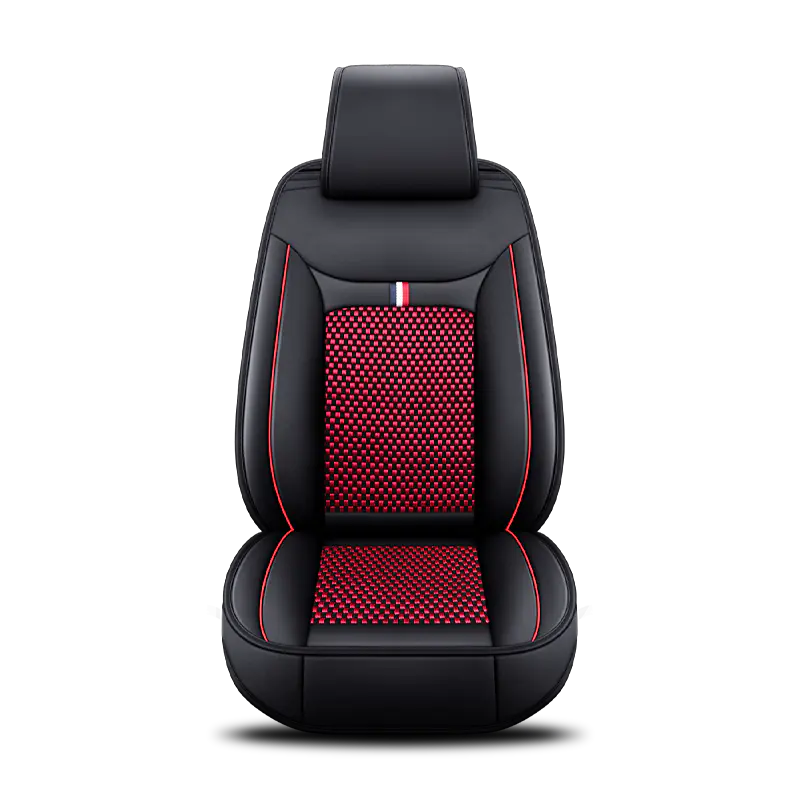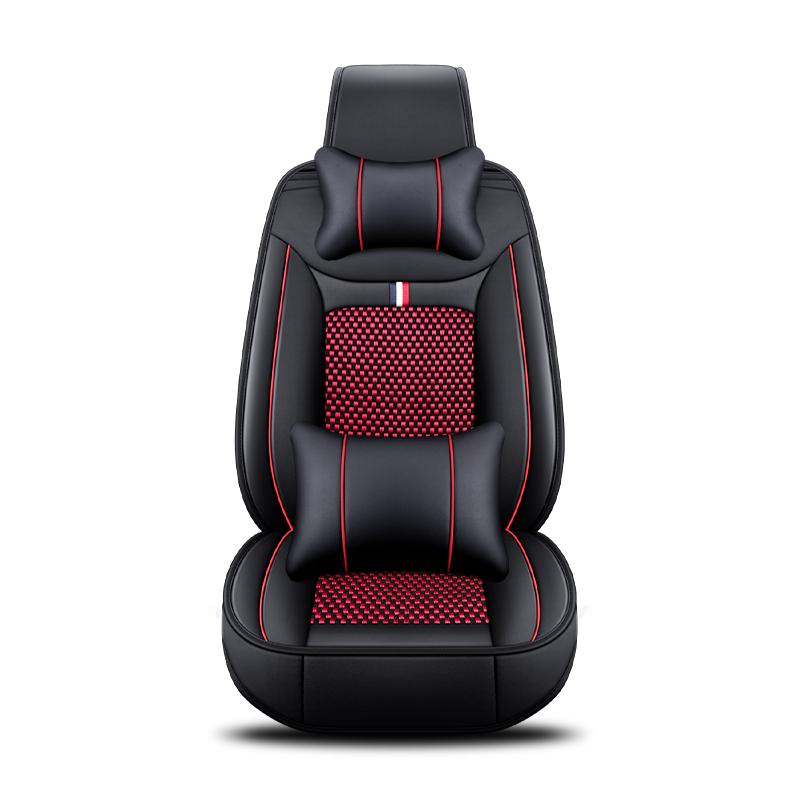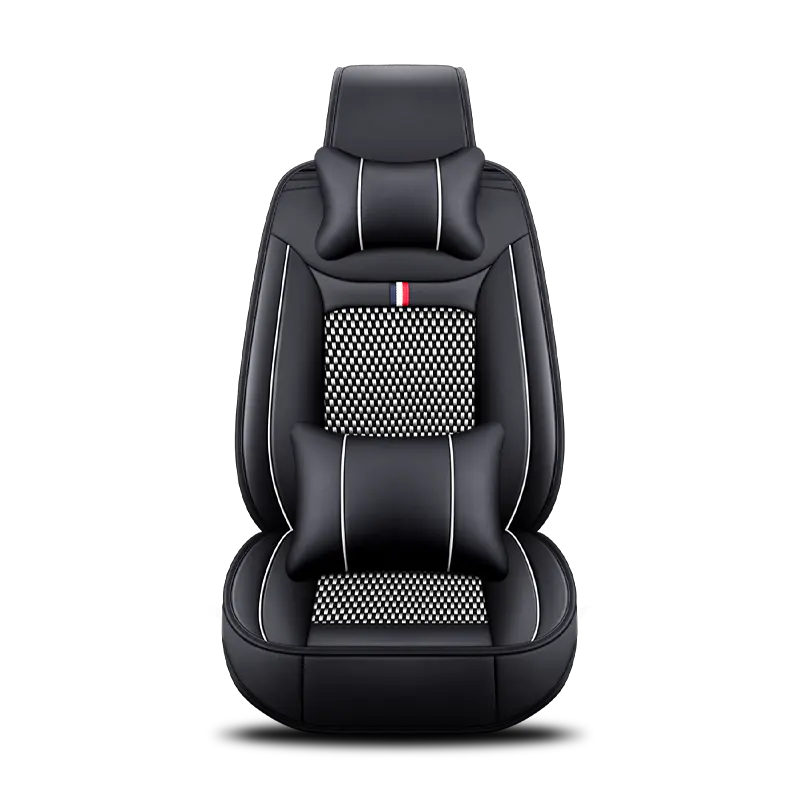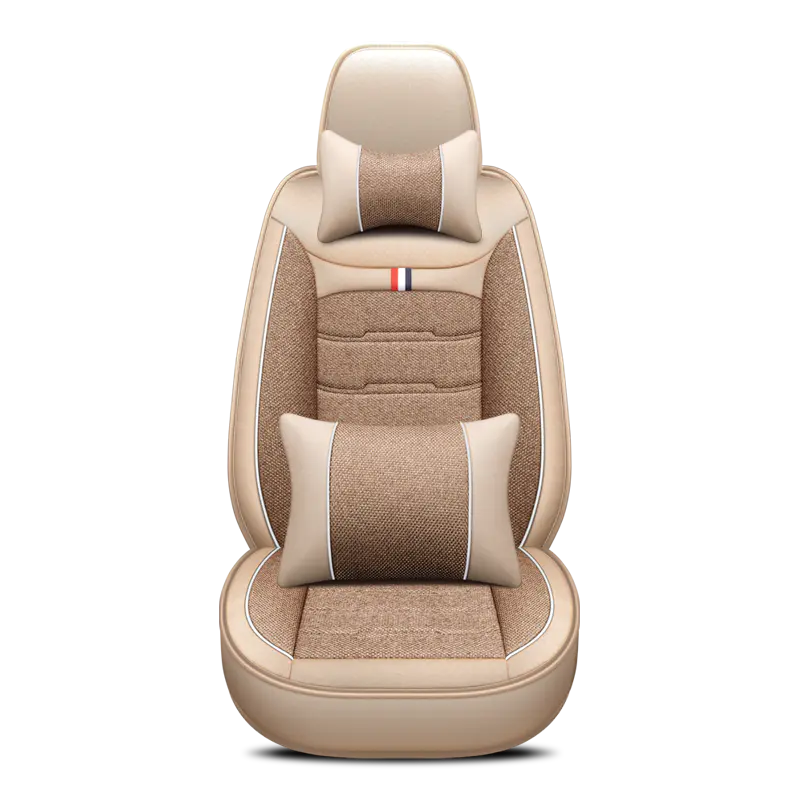Car Seat Covers Full Set as an essential accessory for protecting automotive interiors, enhancing comfort, and adding aesthetic value. A full set of car seat covers includes front and rear covers, often with additional elements like headrest and armrest covers. The functionality and durability of these products depend largely on the materials used in their manufacture. Understanding the raw materials behind these covers helps consumers make informed decisions based on their priorities—be it durability, cost, comfort, or appearance.

1. Polyester Fabric
Polyester is one of the widely used materials in the production of car seat covers. Known for its affordability and resilience, polyester is a synthetic fabric made from petroleum-based fibers.
Key Features:
Lightweight and flexible
Resistant to stains and abrasion
Maintains color well
Easy to clean and maintain
Many full-set car seat covers use polyester or polyester blends as the primary surface material. Its durability makes it suitable for everyday use, particularly in vehicles that are frequently occupied by children or pets.
2. Neoprene
Originally developed for wetsuits, neoprene has become popular in automotive applications due to its water-resistant and cushioning properties.
Key Features:
Good water resistance
Good insulation and comfort
Shock absorption
Slightly elastic and form-fitting
Neoprene car seat covers are especially favored in regions with wet climates or for drivers who require extra protection against spills, moisture, and general wear. Though typically more expensive than polyester, it offers a higher level of protection and comfort.
3. PU (Polyurethane) Leather
PU leather, or synthetic leather, is another commonly used material in car seat cover full sets. It mimics the appearance of real leather but is made by coating a fabric base with a layer of polyurethane.
Key Features:
Cost-effective alternative to genuine leather
Smooth texture with leather-like appearance
Water-resistant and easy to clean
Less breathable than fabric
PU leather combines aesthetic appeal with practicality. It is often used in mid-range seat cover sets that aim to offer a more upscale look without the high price of real leather.
4. PVC (Polyvinyl Chloride) Leather
PVC leather is another synthetic option similar to PU leather, but it tends to be stiffer and more durable.
Key Features:
Highly durable and resistant to scratches
Moisture-proof
Easy to wipe clean
Less soft than PU leather
PVC leather is commonly found in heavy-duty seat cover sets where durability and resistance to environmental elements are a priority.
5. Velour
Velour is a plush knitted fabric that offers a soft and comfortable feel. It is often used for the inner lining or as a surface layer in comfort-oriented car seat covers.
Key Features:
Soft texture similar to velvet
Comfortable during long drives
Available in a range of colors
Prone to attracting dust or lint
Though not as durable as synthetic alternatives, velour adds a luxurious touch to the interior and is suitable for private-use vehicles where comfort is a top concern.
6. Foam Padding
Foam is typically used as an internal layer between the outer fabric and the seat to provide cushioning. Common types include polyurethane foam or high-density sponge.
Key Features:
Adds comfort and support
Enhances fit and structure
Varies in thickness and density
Subject to compression over time
The quality and thickness of foam padding can significantly affect the comfort level of a full seat cover set, especially during long journeys.
7. Mesh Fabric
Mesh fabric is often used in combination with other materials to increase breathability. It is especially popular in seat cover designs intended for warm climates.
Key Features:
Enhances airflow
Lightweight and flexible
Often used in sporty designs
May wear down faster than denser fabrics
Mesh fabric is typically incorporated in side panels or central sections of car seat covers to allow heat and moisture to dissipate more efficiently.
8. Cotton Blends
Cotton, often blended with synthetic fibers, is another option used for car seat covers. While not as commonly used in modern full sets, it remains relevant for certain custom or home-made styles.
Key Features:
Soft and breathable
Eco-friendly and biodegradable
Less resistant to stains and fading
Requires more frequent cleaning
Cotton blends are better suited to users prioritizing natural materials over synthetic ones, particularly for short-term or casual use.









